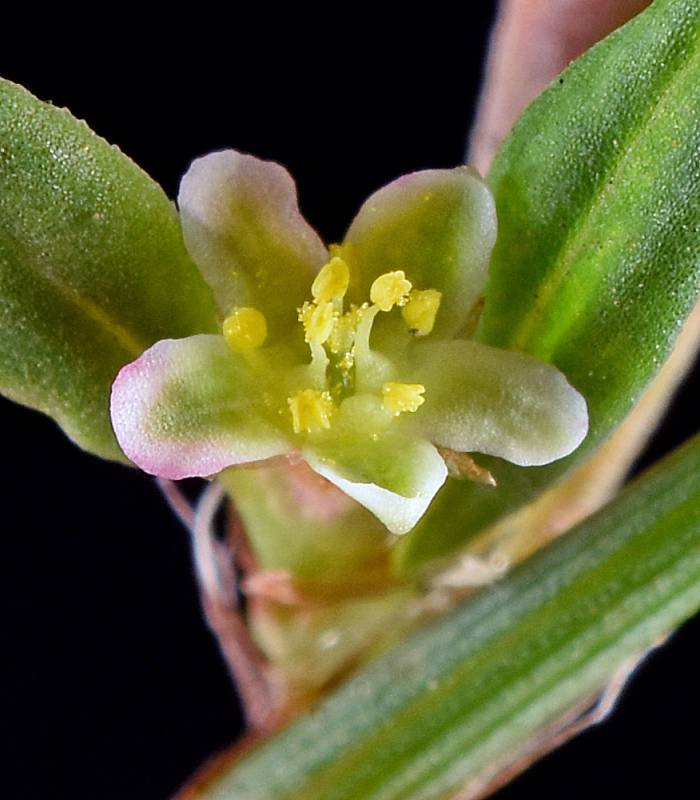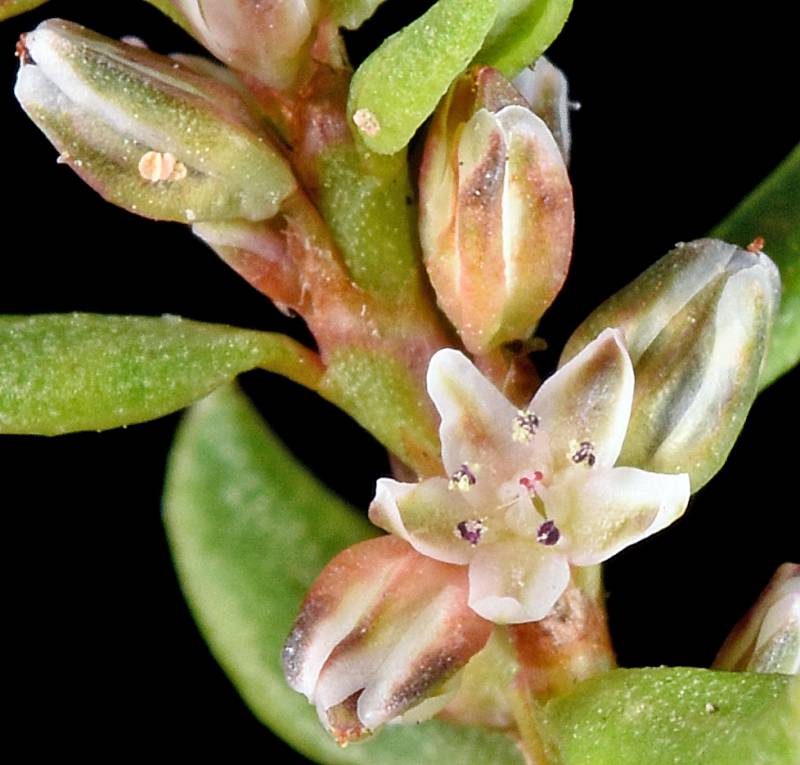Polygonum aviculare
Polygonum minimum
leafy dwarf knotweed, zigzag knotweed
Numerous, bluish-green, only slightly reduced upward, narrowly oblong, 1-3 cm. long and 2-6 mm. broad, narrowed to a very short, jointed petiole;
stipules lacerate, 3-6 mm. long.
1-3 in the axils of the leaves or leaf-like bracts, the pedicles 1-3 mm. long, erect;
perianth 2.5 mm. long, divided 2/3 the length, the segments 5, oblong, sub-equal, greenish with white to pink or red margins.
Achene with 3 sharp angles, brownish, smooth.
Polygonum aviculare
Polygonum minimum
Occurring on both sides of the Cascades crest in Washington; Alaska to California, east across North America to the Atlantic Coast.
Occurring on both sides of the Cascades crest in Washington; Alaska to California, east to the Rocky Mountains.
- Local floras:
BC,
CA,
OR,
WA
- Local Web sites:
CalFlora,
CalPhotos,
Flora NW,
PNW Herbaria,
Turner Photog.
WildflowerSearch
iNaturalist (observations)
USDA Plants Database
- LBJ Wildflower Center
- SEINet
- Plants of the World Online
- Encyclopedia of Life
- Wikipedia
- Google Image Search
- Local floras:
BC,
CA,
OR,
WA
- Local Web sites:
CalFlora,
CalPhotos,
Flora NW,
PNW Herbaria,
Turner Photog.
WildflowerSearch
iNaturalist (observations)
USDA Plants Database
- LBJ Wildflower Center
- SEINet
- Plants of the World Online
- Encyclopedia of Life
- Wikipedia
- Google Image Search



